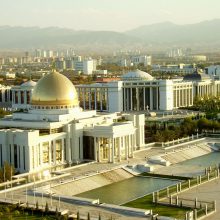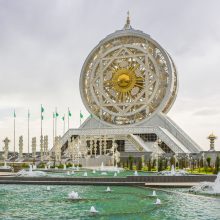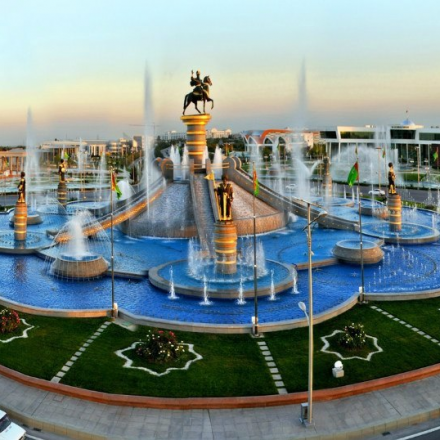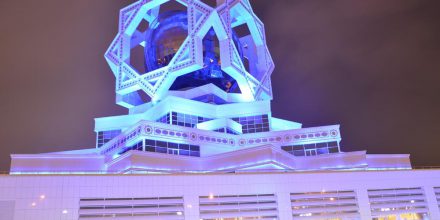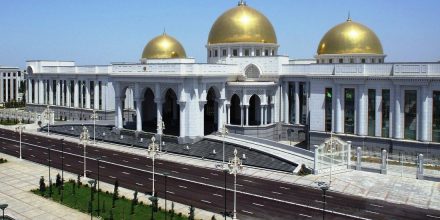Ashgabat (Turkmenistan) Aşgabat) is the capital of Turkmenistan, the largest administrative, political, industrial, scientific and cultural center of the state. Ashgabat is a separate administrative-territorial units of Turkmenistan — the city with rights of the province.
On may 25, 2013, the city was included for the fifth time in the Guinness book of records as the most white marble city in the world (543 new buildings lined with white marble). Earlier this edition included such sights of the Turkmen capital as the world’s highest flagpole (133 meters), the largest fountain complex (27 synchronized fountains), the largest closed — type Ferris wheel, and the largest architectural image of the star-the eight-pointed star of Oguz Khan on the TV tower.
Geography
Ashgabat is located in the South of Turkmenistan, 25 kilometers North of the border with Iran on the Turan lowland.
The city is located in the oasis of Akhal-Teke on the Kopetdag Piedmont plain. To the South of the city rise the mountains of Kopetdag, from the North is the Karakum desert. The height above sea level is 214-240 meters.
History
The city of Ashgabat was founded in 1881[16] on the site of the eponymous Turkmen settlement-fortress as a border military fortification and administrative center of the Transcaspian region of the Russian Empire, managed by the military administration. The town consisted of mud houses, surrounded by orchards. The streets were designed straight and mostly with single-storey buildings, as after several earthquakes it was decided not to build multi-storey buildings, if they were clay. The population of the city in 1901 was 36.5 thousand people, including 11.2 thousand Persians, 10.7 thousand Russians, 14.6 thousand Armenians and other nationalities. Turkmens lived outside the city in their nomads[22].

